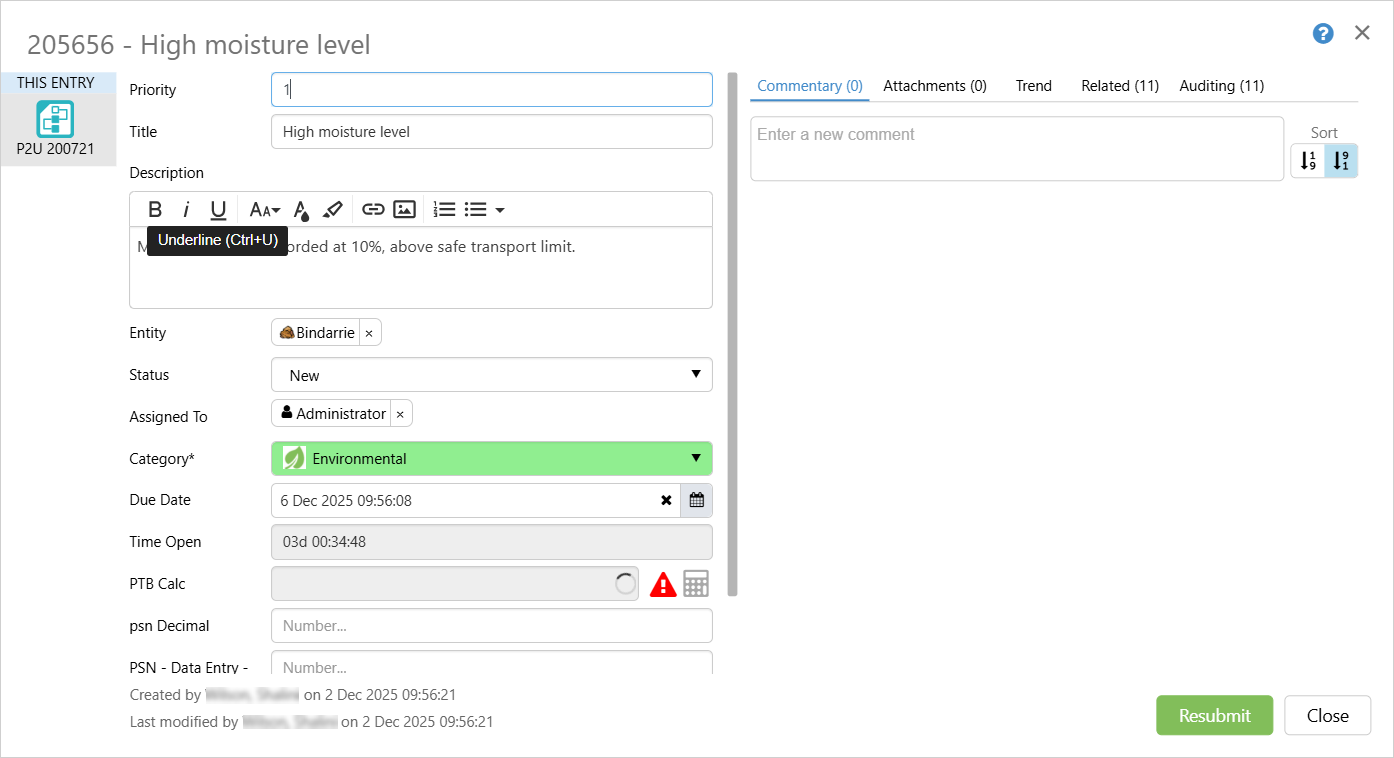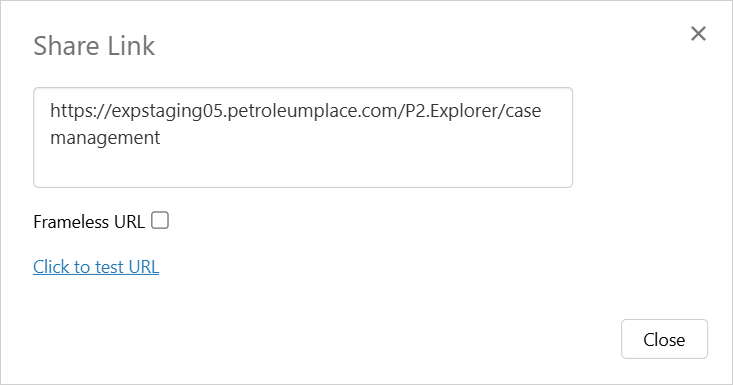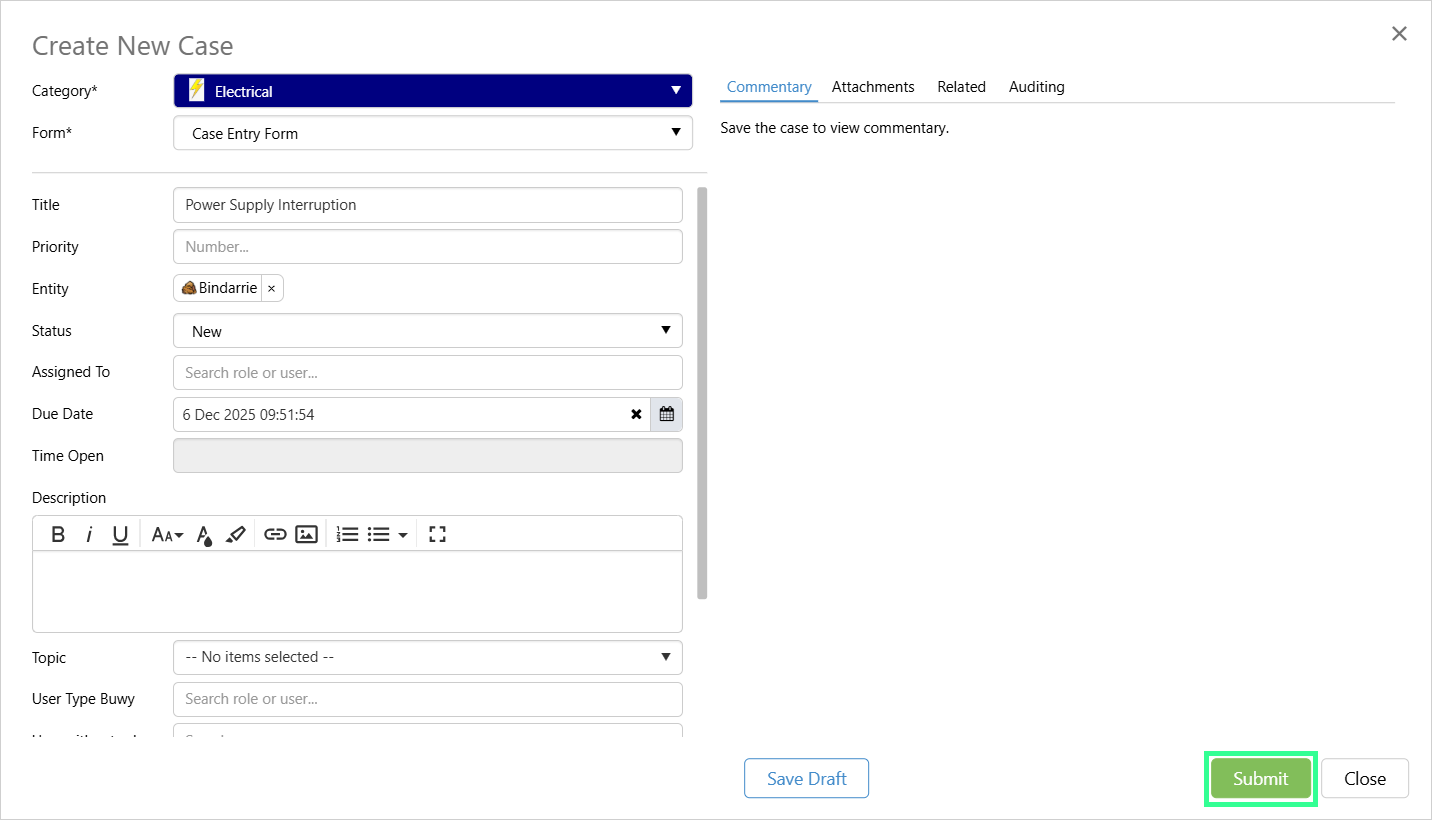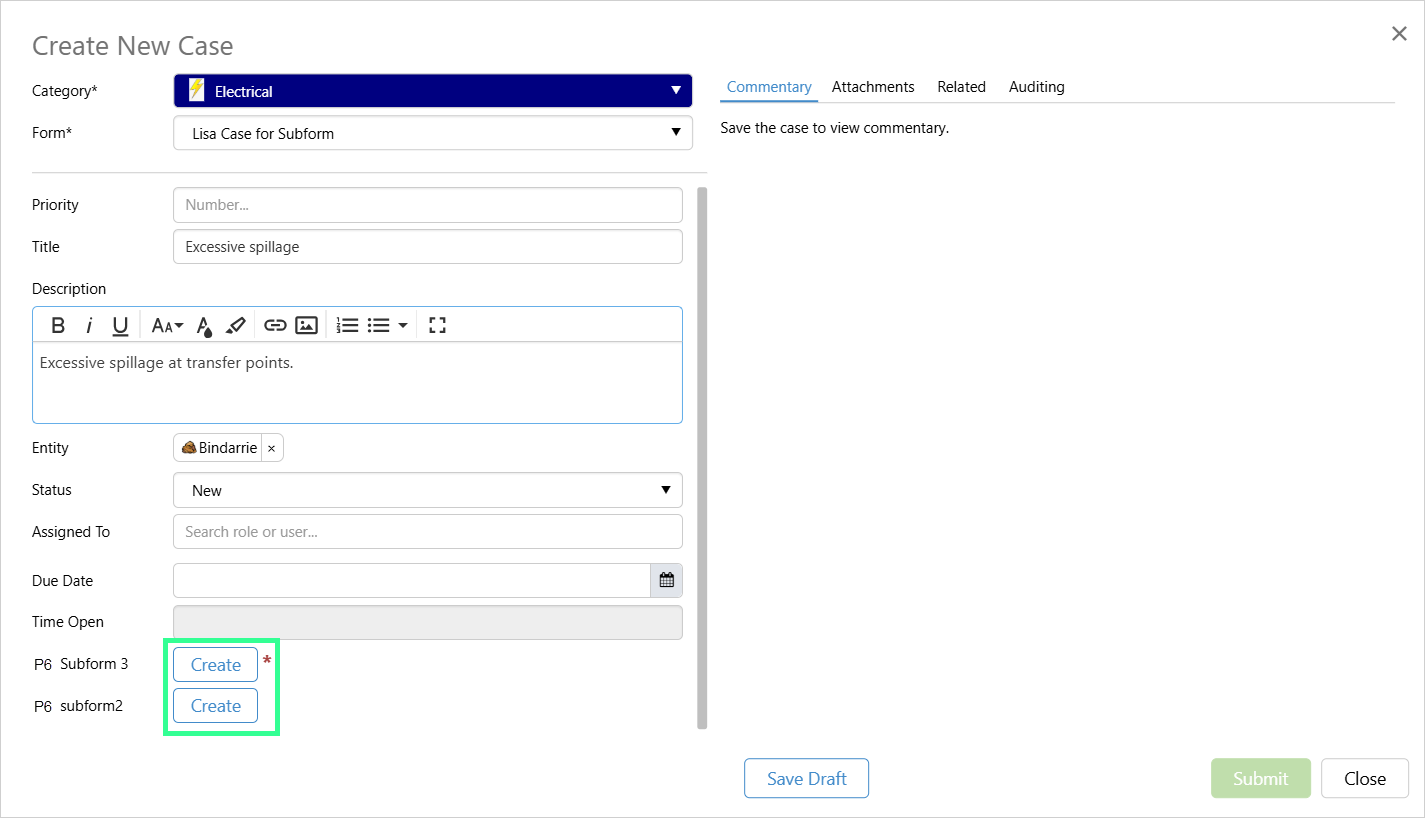ON THIS PAGE:
Case Management is about the management and monitoring of cases. Monitoring activities and events that have an impact on cases, and managing the actions needed to resolve each case.
Cases are activities or events that may need further observation, investigation and rectification.
Cases are raised (manually in Explorer or Shift Log, or automatically when Sentinel events occur) in the monitoring of entities (or assets, as they are called in Sentinel).
Open Case Management
Case Management can be accessed from the Case Management Table, by using a direct URL to a specific case, or through a shared link to the Case Management home page.
Case Management Table
Use the Case Management option in the Explorer toolbar or sidebar to open Case Management Table.
Linking to a Case using a URL
You can open a case directly by using the URL. The URL command for opening a case in IFS OI Explorer is:
https://[server name]/P2.Explorer/cases/[CaseId] where [server name] is the name of the Explorer Server and [CaseId] is the case’s Id.
Each case has an assigned Case Id which can be found in the Case Management Table.
This opens the case in an Edit Case window in a new Explorer browser window. For example:
Open a Case from a Link
You can share access directly to the Case Management home page by using the Share option in the toolbar. This saves the need to navigate there from Explorer.
When you click on the Share option, a dialog box appears that provides a link preview for easy copying, along with Frameless URL checkbox for opening the link outside the IFS OI Explorer framework and an option for testing the generated link before sharing.
Saving a Case
Once you create a case entry, click the Submit button in the entry dialog to save it.
The submitted entries cannot be converted back to drafts. However, they can be edited and resubmitted using the Resubmit button available when you open a saved case.
Save as a Draft
If you only have partial details for an entry, and it is not ready for submission, you can save it as a draft and complete it later. These drafts can be reopened, updated, and submitted at any time.
Draft entries can be searched for, viewed, and edited by the entry creator and administrators.
Subform Entries
When a form type that includes fields with the Entry data type is selected during case creation, a Create button appears next to the field name in the entry dialog.
Click this button to open a subform.
After you complete the subform by entering the required details and saving it, the ID assigned to the new subform entry will be displayed in the Case Entry dialog.
Raising Cases
From Sentinel
The Sentinel-raised cases in Explorer can be viewed from Sentinel: Case Id, Title, Category, Entity (shown as Asset), Raised Date, State, Raised By and Assigned To in the Asset reports.
Updates to Sentinel-raised cases update the event status for originating events in Sentinel. When a Sentinel-raised case is confirmed or rejected in Explorer, the related event in Sentinel has an automatic status update to Valid (for confirmed cases) or Invalid (for rejected cases).
From Shift Log
To raise a case from Shift Log, open a workbook that includes a Case Entry table.
Click the Add Entry icon in the Case Entry table. The Case Entry dialog box will appear.
Fill out the necessary details for the case. Submit the case entry or save it as a draft for later completion.
Key Concepts
Case Categories
Case categories are used to drive form selection, and to group and filter cases.
When a new case is created, the first field selected is the category, this then filters the list of available forms that can be used. The categories are a named list and are assigned to case forms in the form configuration.
Case Status
The status for a new case is always New.
Case statuses can be changed in any order. The following statuses are some that can be applied: New, Investigating, Confirmed, Rejected, Closed, Deprecated.
In Sentinel, there is an optional setting to automatically close cases when deferred cases are complete.
Deprecated Cases
In Explorer, cases can also be manually updated to the Deprecated status.
Sentinel-raised cases are automatically deprecated when the responsible Sentinel monitor is re-run for the period that the case was raised.
Managing Prioritization of Cases
Every case in Explorer has a priority, with a default priority of 10 being assigned to all new cases. A case priority can be updated manually, and also automatically by the IFS OI Server applying the AutoCaseCalculations spreadsheet.
In the application of the spreadsheet, automatic priorities are applied to the priority field, according to the rules for that case’s category and how the case evaluates against those rules. The rules are defined in the customized AutoCaseCalculations spreadsheet which is maintained on IFS OI Explorer’s server.
Release History
- Case Management Overview 4.21
- Updated Help Center Documentation
- Case Management Overview 4.14
- Subform Entries
- Draft Entries
- Case Management Overview 4.13
- Open a Case from a Link
- Case Management Overview 4.10
- Case Categorisation













